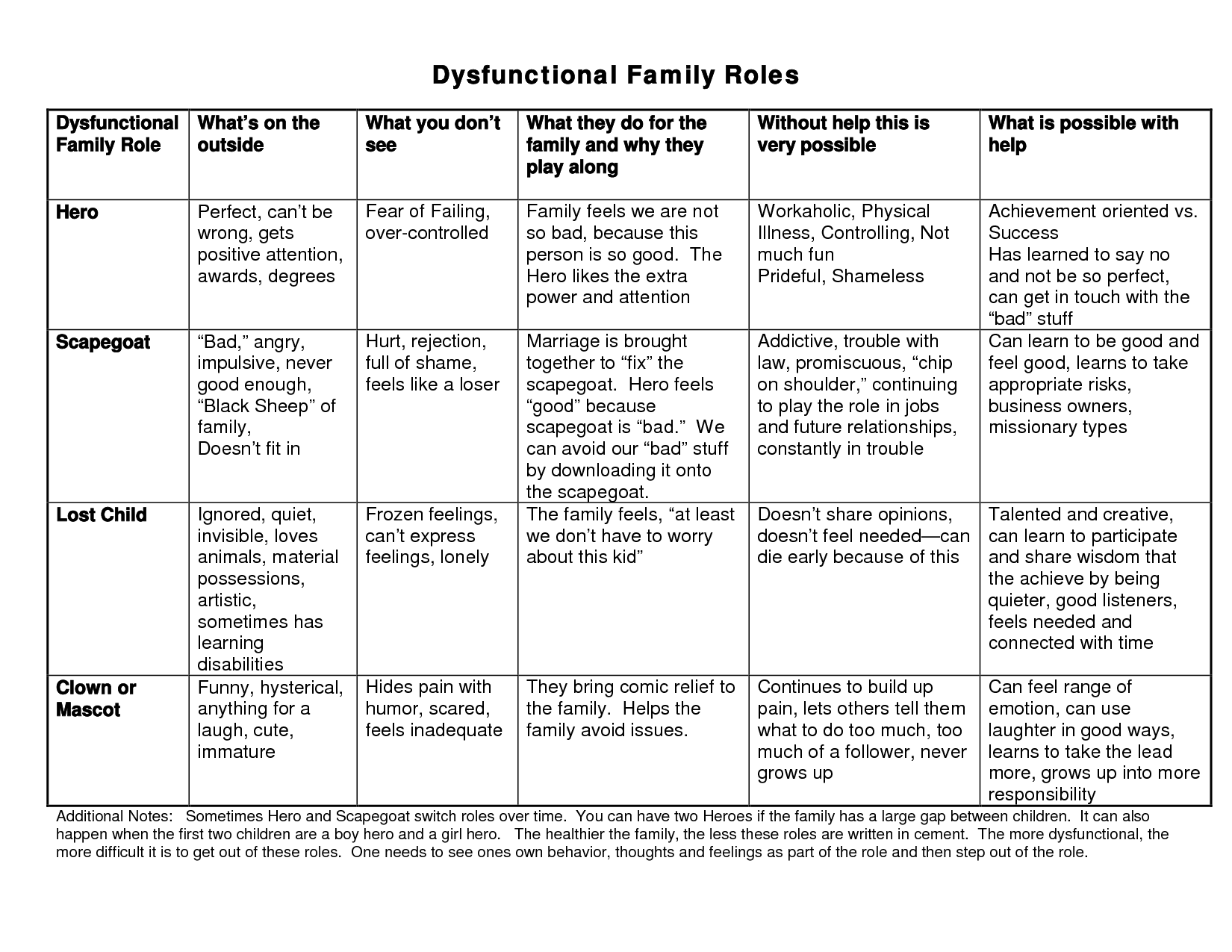Dysfunctional Family Roles Chart

The Role Of Family Dynamics
A family can bring about a sea of change in an individual, both good and bad
According to psychology, human beings are social animals, meaning that humans have needs which are instinctual in nature and we need people around us to fulfil these needs. The presence of other people around, makes all the difference to the existence of a person.
The immediate social interaction for a person or an infant starts with his mother or the caregiver and extends to the rest of his/her family. A family can bring about a sea of change in an individual, both good and bad.
The dynamics of a family begin with interpersonal relations and interactions within a family. It also speaks about the procedure within a family. A multiple accumulative system plays an important role in the functioning of a family. This particular approach defines the interaction of members at a uniquely independent level with a feedback mechanism from other members.
Cultures differ in how much they encourage individuality and uniqueness versus conforming to norms and independence. Cultural differences encourage and reinforce family dynamics. It influences the decision making process, compliance to the societal norms and achievable outcomes. An individual’s culture encourages the dynamics of a family in an extremely positive way, by teaching self-reliance, decision making based on individual needs and a right to think privately.
In certain collective societies, loyalty is expected to one’s immediate or extended family. At this point, let me make use of the term familism – where the needs of the entire family takes precedence over individual members. This concept promotes the ideas of loyalty, trust and cooperation within the family.
Factors That Influence Family Dynamics
- Nature of parents’ relationship.
- Psychological and mental state of parents.
- Number of children in the family.
- Single parents.
- An absent parent.
- Personalities of family members.
- Influence of immediate and extended family.
- Mix and match of members and between members.
- Disability or chronic sickness of a family member, especially a child.
- Effect of separation, death, trauma, affair, mental and physical health difficulties in the family.
- Violence, abuse, alcohol, drug abuse etc.
- Family beliefs, customs, gender roles, power roles in the family.
- Emotional attachments in the family.
- Dynamics of generations of people living in the family.
- Socioeconomic and political influences.
Family dynamics are not one-sided as there are several versions to a family story. Each person in a family unit has individual perspectives leading to issues and conflicts. It is more of a dichotomous situation where extremes of an idea are seen instead of grey ones.
This simply means that, wherever there is a flow of more than one idea, thought or theory. we need to look at both sides of the same coin as they are mutually interdependent and outcomes are based on a compilation of these interpretations.
Family dynamics encourage strength-based practises for example, roles taken up by family members like that of a peace keeper of the family. At the same time, a person may always become a scapegoat indicating a dysfunctional environment. A family also reinforces patterns which are either positive or negative.
Structural issues such as the number of people in a family also influences a person’s behaviour. Parents should try to share their power positions and support each other in the decision making process and appropriating discipline for their children. Family dynamics can be defined as being influenced by the following:
- Nuclear or extended family models where certain decisions are reserved for older family members and children are encouraged to act as age appropriate decision makers.
- Joint families or multigenerational households adopt a collectivistic decision making approach.
- Role reversal, role change and feeling of kinship talks about belongingness and position of an individual within one’s family.
An individual’s culture encourages the dynamics of a family in an extremely positive way, by teaching self-reliance, decision making based on individual needs and a right to think privately
Finally, we cannot ignore the innumerable stresses that a family encounters as a process of growth and radical shifts in family dynamics. An understanding of the same, may help individuals to perceive better and adjust to the needs of the family and society as a whole in a healthy and positive way.